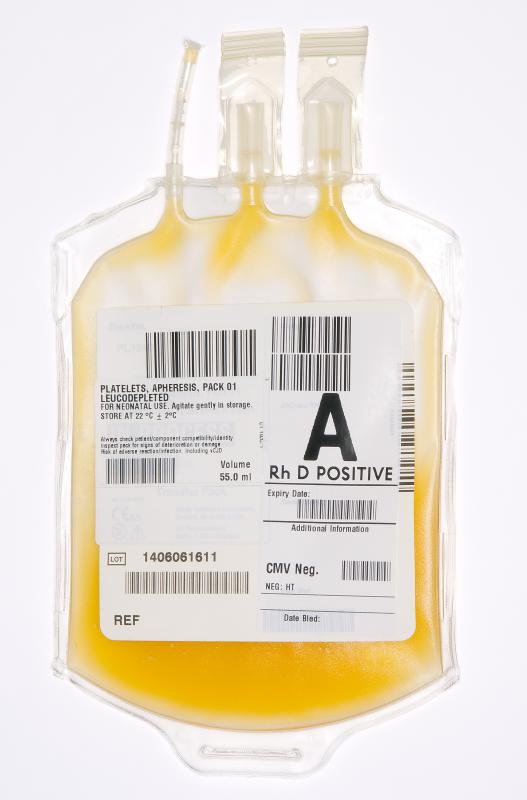At WiseGEEK, we're committed to delivering accurate, trustworthy information. Our expert-authored content is rigorously fact-checked and sourced from credible authorities. Discover how we uphold the highest standards in providing you with reliable knowledge.
What is Platelet Rich Plasma?
Platelet rich plasma (PRP) is a small portion of the blood that is comprised of a high concentration of platelets, which have the ability to help the body heal itself by releasing growth factors. PRP treatment involves injecting a patient's own concentration of platelets directly into an injury. This therapy mimics the final step of the clotting process without actually enlisting the clotting response itself, and enables the injury site to quickly heal because of the adhesive properties of the platelets. PRP is also used in alternative therapies to help treat many common orthopedic conditions. It appears to assist in regenerating ligament and tendon fibers, which could minimize recovery time and even eliminate the need for surgery.
Platelet rich plasma is usually obtained by intravenously removing a small amount of a patient's blood. The blood is then processed through a centrifuge that divides the red blood cells from the platelets using high speed rotations. Approximately one to two teaspoons of the platelet rich plasma, which contains concentrations of platelets that are three to ten times that of normal blood, are then injected directly into the area needing treatment. This technique enables areas that may not receive optimal blood flow, such as tendons and ligaments, to heal more quickly.

One benefit of platelet rich plasma therapy is that it is typically very well tolerated, with few side effects or adverse reactions. This is because PRP is an autologous therapy, which means that it is obtained from the patients own body and, therefore, carries less risk of rejection or allergic reaction. The procedure also takes only about 20 minutes and has a minimal recovery time, making it a preferred treatment over more invasive techniques. In addition, the cost of platelet rich plasma therapy is usually considerably less than surgery.

Platelet rich plasma therapies have been used by plastic and maxillofacial surgeons for over 20 years in bone grafting procedures involving the neck, mouth and jaw. It has most recently been used for surgical tendon repair and for sports-related conditions involving acute muscle injury and chronic tendon problems. This therapy has been particularly effective in treating conditions like lateral epicondylitis, also known as tennis elbow; Achilles tendinitis; patellar tendinitis, also known as Jumper's Knee; and rotator cuff tendonopathy, a common cause of shoulder pain.

One concern associated with using platelet rich plasma therapy is the consistency of the results. Some physicians report that the treatment is ineffective in up to 20 to 40% of patients. Another concern is that multiple injections are often required to achieve minimal benefit, and often insurance companies will not cover the cost.
AS FEATURED ON:
AS FEATURED ON:














Discuss this Article
Post your comments